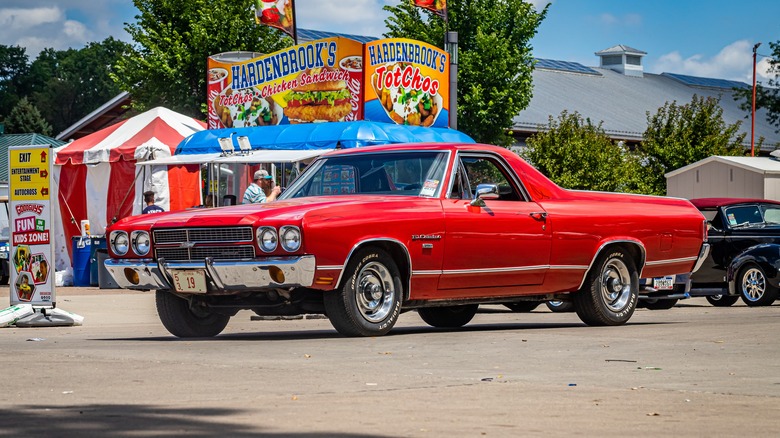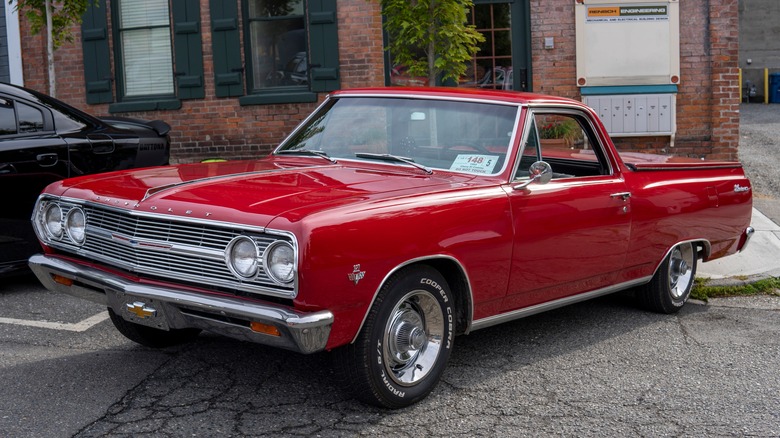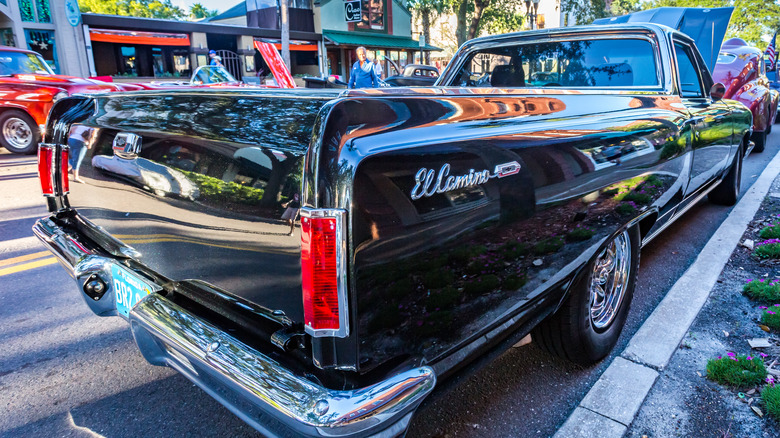
Gestalt Imagery/Shutterstock
By Brad Hill/
Long before Brad Pitt ever uttered «Ellllllll-Camino» in «The Mexican,» people everywhere already knew about the truck-sedan hybrid. It was one of the best utility coupe car-trucks of all time and a direct challenge to the Ford Ranchero in the 1959 model year. Unfortunately, Ford had too much of a stranglehold on the market, since it had been out for two years already. The El Camino’s first generation only lasted until 1960 and didn’t return until 1964, meaning the El Camino was no stranger to being discontinued by the time Chevy pulled it for good in 1987. So, why did Chevy finally decide to pull the plug on such an iconic design?
To put it simply, it wasn’t selling as well as Chevy’s new compact truck, the S-10 pickup. Sales for the El Camino were already on the decline by the time Chevy moved its production to Mexico. Why Mexico? It was an attempt to cut costs, probably trying to make up for the declining sales. Between 1979 and 1980, the El Camino sales dropped from 58,008 units sold to 40,932. That’s a 17,000 unit dip, which isn’t too inspiring. By the time Chevy moved the car’s production to Mexico in 1984, only 22,997 units were sold. The last two model years for the car-truck hybrid sold 13,743 (1987) and 420 (1988). After 1987, the El Camino became a piece of history as one of the most iconic Chevrolet models ever built.
El Camino’s brief history

Summer_Wind/Shutterstock
The first generation of the El Camino came about in 1958, using a modified Brookwood station wagon platform. Unfortunately, sales weren’t where the automaker would have liked to see them, so they pulled the plug on the car-truck hybrid experiment, marking the first time the vehicle was discontinued. The Ford Ranchero, on the other hand, continued selling exceptionally well. Well enough to prompt GM to give the unique car-truck a second try. The second generation El Camino came about in 1964 and this time it was built on the Chevelle –a muscle car with tons of torque-– platform.
This second iteration came with plenty of engine options, with the top-tier trim coming with a 327 V8 that produced 300 horsepower. If the second generation El Camino was seen as a utility vehicle, the third generation (1968 to 1972) took on more of a sporty persona in appearance and performance. Chevy offered a Super Sport (SS) model of the car with a choice between two big block 454 V8 engines. Unfortunately, the emissions mandates from 1971 meant that no El Camino after this would be as powerful. Enter the fourth generation that lasted from 1973 to 1977.
The fourth gen El Camino put on some weight with its new style and utilized some of GM’s weakest engines. The base model had a 250 cubic-inch inline-6 under the hood that only pushed out 105 hp. The 454 V8 remained an option, but it could only produce 215 hp.
El Camino’s fifth generation

Different_brian/Getty Images
While the fifth generation would be the El Camino’s final appearance in the showroom, it ended up being the longest-running generation, lasting from 1978 to 1987. Coincidentally, Ford was winding down its Ranchero production in 1979. Perhaps Ford saw a change in the winds before GM. However, this made the El Camino the sole car-truck hybrid on the market, leading to the automaker selling nearly 60,000 units in 1979.
This generation saw the El Camino with a single headlight design and for the first time ever it sported a 3.3-liter V6 engine option. There were two V8 options available, as well as diesel engines, between 1982 and 1984. The number of repairs needed for the diesel engines quickly prompted Chevy to remove it as an option all together.
Chevrolet toyed with the idea of bringing back the El Camino in 1995, where it showed off a concept for a new generation using the full-size Caprice station wagon platform. Unfortunately, the demand just wasn’t there for its return and will remain a piece of automotive history for the foreseeable future.